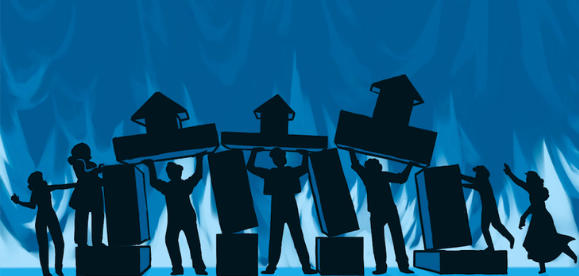Our Favorite Thing Is…
My Favorite Things Is… features anything or anyone an Alsioner has been enamored of for the longest time and with the most pulse-pounding passion. The writers, Lauren Chang and Isa Eugenio, herein would not only have to explain their magnificent obsession but depict it in their own inimitable way.
There have been a great number of musicals and plays that have graced the Broadway stage. Some have gained the title of a classic, such as Hello, Dolly! and Les Miserables, while others have been a shocking stray from the norm, such as Spring Awakening and Hair.
Many shows that receive enough positive reception eventually get a revival. These are so popular there is even a Tony category dedicated to “Best Revival of a Musical” and “Best Revival of a Play.” One of the shows that has recently been revived and subsequently honored with Tony nominations is the 2016 Falsettos.
The show’s recent remounting played in the Walter Kerr Theatre from September 29, 2016 to January 8, 2017. It was produced by Andre Bishop, directed by James Lapine, with new musical orchestrations by Michael Starobin and minor lyric changes by original composer William Finn.
It was then nominated for five Tony Awards, including Best Actor in a Musical, Best Featured Actor in a Musical, Best Featured Actress in a Musical, and Best Revival. Falsettos was also recorded by Lincoln Center and aired in cinemas nationwide in July 2017, and then aired on PBS as part of the Live from Lincoln Center segment during the 2017 Fall Arts Festival.

Falsettos is primarily an ensemble show, featuring only five characters in the first act and seven in the second act. The story begins in 1979 and revolves around a Jewish man named Marvin, his male lover Whizzer, his ex-wife Trina, his son Jason, and his psychiatrist Mendel. The second act takes place two years later and the musical begins to focus on the group dynamics of the characters as well as introduces Marvin’s two lesbian neighbors, Charlotte and Cordelia. It also uses the second act to explore the HIV/AIDs crisis and how it affected the characters.
A musical that depicts the family dynamics of a homosexual man and discusses the HIV/AIDs crisis of the 1980s does not jump to mind when one thinks of a Broadway show that might attract many people. It does not have the usual grandeur orchestrations that Broadway is arguably most famous for; instead, it uniquely depends on only four musicians to play the entire score. The musical also does not feature a large company and giant dance numbers. But the recent revival of this show introduced a slew of factors that made a unique, uncomfortably quirky show–one, in our opinion, that had to be brought to the stage again.
Every Broadway show is carefully scrutinized by critics, who are sure to pick apart almost every small issue with the production. However, almost all reviews of the Falsettos revival agree that the cast of the show was spectacular, and, for us, that is one of the primary reasons as to why this is our favorite show.
The show’s cast was comprised of many already-popular Broadway actors, including Christian Borle (Marvin), Stephanie J. Block (Trina), Andrew Rannells (Whizzer), Brandon Uranowitz (Mendel), Tracie Thoms (Dr. Charlotte), and Betsy Wolfe (Cordelia). The newest and youngest cast member was Anthony Rosenthal (Jason), who made his Broadway debut with the show. This cast managed to bring a fresh perspective to their characters, giving the musical a new life.
One of our most favorite cast members is Stephanie J. Block, best known for her role as Edwin Drood in the 2012 revival of The Mystery of Edwin Drood. Not only does Block provide a spot-on performance of the slightly anxious housewife Trina, but her singing skills are superb. From the soft and slightly slow “Trina’s Song” to the upbeat and powerful “I’m Breaking Down,” Stephanie’s voice is consistently amazing throughout the musical.
The one thing that makes this revival our favorite show is the set. The set designer, David Rockwell, says the primary set is a “Rubik’s-like cube…composed of roughly 20 separate blocks of various shapes, some of which become pieces of ‘furniture’ that the cast moves around to create various scenes, from a psychiatrist’s office, to a kitchen, to a living room.” This cube is used throughout the entirety of Act 1 and for about half of Act 2.

Compared to the sets of most other Broadway shows, this is strikingly different. The set plays a role in setting the stage for the world that the characters live in. In the beginning of the show, when Marvin is more idealistic about what he wants his family to be, the cube plays a huge role in it. Similar to child’s building blocks, characters move around the set to make it the location they want it to be. However, as a real world issue is introduced, namely AIDS, we see the cube slowly disappearing as a set made of more realistic objects (such as a chair, a hospital bed, and curtains) appears.
The 2016 revival of Falsettos has brought a fresh breath of life to a show that talks about issues that are slowly being introduced into mainstream media today. The fantastic cast, unique set, and eccentric music all reinforce the fact that Falsettos is one of our favorite musicals.

